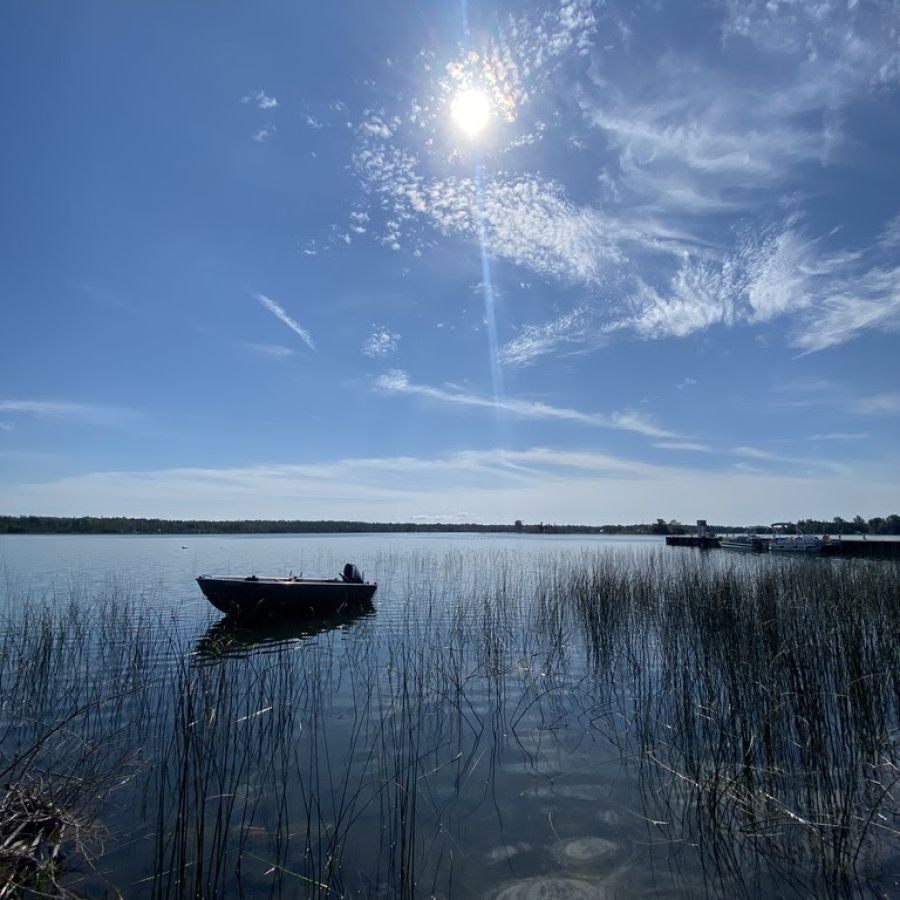Fisheries Assessment Program Update
Harbour Authority
The Chippewas of Nawash Unceded First Nation will be reaching out to Saugeen Ojibway Nation (SON) fishermen to determine interest in forming a harbour authority at Stokes Bay and Howdenvale. A harbour authority is a non profit organization that maintains and makes the rules for harbours. This would put these essential harbours in the hands of those who depend on them to make a living.
Together with Giigoonyag
Together with Giigoonyag (fishes) is a collaborative and community-based research project between the Saugeen Ojibway Nation (Chippewas of Nawash Unceded First Nation and Chippewas of Saugeen First Nation), Parks Canada - Fathom Five National Marine Park, and Ontario Ministry of Natural Resources and Forestry. This initiative will bridge SON and Western science-based knowledge systems through a two-eyed seeing approach. This initiative will help us better understand lake whitefish in Lake Huron, including Georgian Bay and the Saugeen Ojibway Nation Traditional Territory. Through a series of different studies over the next 5-years, we aim to work collaboratively, bringing together scientists, decision makers, community members, and fish harvesters.
Over the past two decades, the Lake Huron ecosystem has undergone drastic changes, resulting in the decline of lake whitefish throughout Lake Huron. While lake whitefish is our primary focus, we will be including other species like lake trout in this work. Lake whitefish are a socio-ecologically important fish species playing a vital role in the ecosystems of Lake Huron and in cultural and economic contexts for the Saugeen Ojibway Nation, who have harvested them since time immemorial. The project takes a “two-eyed seeing” approach by applying SON and Western scientific ways of knowing to address the concerns about fish and the water in the Saugeen Ojibway Nation Traditional Territory. The Together with Giigoonyag initiative will build relationships, provide data to inform lake-wide fisheries management, and foster mutual understanding between SON and the broader communities. The following are the key activities under this initiative.
SON Ecological Knowledge
Community-based researchers will be conducting SON ecological knowledge interviews regarding lake whitefish and the species’ role within the food web with knowledge keepers including fish harvesters and Elders from the Saugeen Ojibway Nation. These interviews will include a mapping component to identify important information such as spawning shoals, key movement corridors, seasonal occurrences, and culturally significant locations. This knowledge will be analyzed and used to inform other components of the Together with Giigoonyag initiative and ongoing Nation-to-Nation dialogue.
Acoustic Telemetry
Knowledge of a fish species’ movement patterns is fundamental to understanding that species’ biology. For a harvested species of ecological and cultural importance like lake whitefish, knowledge of that species movement patterns is also critical information for fisheries managers. An acoustic telemetry system consists of two main components: transmitters and receivers. Transmitters are electronic tags that broadcast a series of “pings” (sound pulses) into the surrounding water. These tags will be surgically implanted into fish of interest and released back into the wild. Listening stations (receivers) are placed on the bottom of the lake at various locations to “listen” for tagged fish as they swim by. The receivers are periodically retrieved and the information they have recorded is downloaded for scientific study.
Using acoustic telemetry, this project will monitor the lake-wide movements of lake whitefish, providing valuable data on home-range size and seasonal movements of various populations. This will be the first time that an acoustic telemetry project of this scale is undertaken in Lake Huron. Broader scale collaboration will be encouraged. The telemetry array established through this project will be able to provide the basis for future projects tracking movements of other species in Lake Huron.
Larval Fish and Habitat Assessment
Mature lake whitefish gather and spawn in the fall over shallow and rocky shoals along the shores of Lake Huron and Georgian Bay. The eggs overwinter and hatch as larval fish the following spring. At present, there is limited knowledge of the factors that affect spawning success (e.g. invasive species, algal blooms, and climate change). This component of the project will include conducting larval fish and plankton surveys, as well as spawning shoal mapping. The results from mapping SON ecological knowledge will inform the application of remote sensing technology to assess fish habitat and locations/timing for larval fish assessments.
Long-term Monitoring Indicators
Long-term monitoring is essential to understanding changes in fish communities and providing information for sustainable management. Index netting will be conducted to measure fish diversity and identify the status of species at risk. Through this project, new indicators will be developed to assess the status of key species and aquatic habitats as part of Fathom Five National Marine Park’s ecological monitoring program.
Addressing Fish Stocking
The purpose of this project is to understand the influence of fish stocking in the Ontario waters of Lake Huron and Georgian Bay with a specific focus on the SON Traditional Territory. By compiling and reviewing the relevant literature and SON ecological knowledge, we seek to gain an understanding of what is known, identify gaps, and provide recommendations for future research. The literature review, community-based interviews, and workshops will help to inform the creation of the SON’s Goals and Objectives for the Fishery and the subsequent development of recommendations for an action plan.
SON Community Engagement, Education and Outreach
This is a community-based project and as such it requires ongoing engagement, education and outreach. Education and outreach have been identified by SON leadership and the SON communities as an essential component of the Together with Giigoonyag initiative. process for the project and will serve as the foundation for addressing the other components. This additional information will contribute to other key priorities/projects for the SON communities through increased awareness of their cultural heritage and community participation in conservation efforts.
Development of SON’s Goals and Objectives for the Fisheries
This additional information will contribute to other key priorities/projects for the SON communities through increased awareness of their cultural heritage and community participation in conservation efforts.

